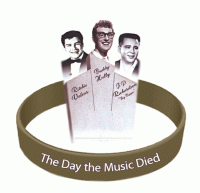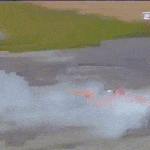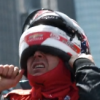What is the future for oval racing in IndyCar?
#1

Posted 20 August 2018 - 19:23
What is the future for oval racing in IndyCar?
Phoenix has been dropped from the schedule for next year. Fontana and Milwaukee last ran in 2015 and don't look like returning. The attendances at Texas are terrible. Pocono, in my opinion, just produced one of the dulliest races in living memory. Homestead, Kansas, Chicagoland and Michigan seem well out of the picture.
We keep hearing that it's difficult to make ovals financially viable.
BUT
The Iowa race this year was brilliant and Texas was pretty good without pack racing. Gateway seems to be growing as an event. The Indy 500 is bouncing back with more entries and what looks to be increased attendance.
We then need to look at satefy, at least for the super speedways. There have been three crashes in the last four seasons at the two super speedways (IMS and Pocono) that have caused very serious injuries to Hinchcliffe, Bourdais and Wickens. I'm not including Wilson's accident as I don't believe it was related to the track, just bad luck. We also had Dixon's miracle escape at Indy.
Obviously Indy is always going to be on the calendar. That's an absolute given.
What's the future for the remaining ovals and ovals we used to go to?
Can they continue to make up 4 or 5 races each year?
Is there anything that can be realistically done to make the super speedways safer?
#3

Posted 20 August 2018 - 19:31
Personally for me the lessening of the ovals for more balancing of street and road courses has brought me to Indycar and I'm really enjoying it.
I think they should aim for 3-5 oval rounds per year and have 5 or so both road and street courses respectively. America has some fantastic tracks and I'm glad Indycar is showing more of them.
As for safety, beyond me how they can slow a 220+ mph missile down, I'm surprised we didn't loose Wickens yesterday.
Edited by TheMidnight, 20 August 2018 - 19:49.
#4

Posted 20 August 2018 - 19:34
15 rounds, 5 ovals, 5 street and 5 road courses. Would be nice to see ![]()
#5

Posted 20 August 2018 - 19:37
Personally for me the lessening of the ovals for more balancing of street and road courses has brought me to Indycar and I'm really enjoying it.
I think they should aim for 3-5 oval rounds per year and have 5 or so both road and street courses respectively. America has some fantastic tracks and I'm glad Indycar is showing more of them.
As for safety, beyond on me how they can slow a 220+ mph missile down, I'm surprised we didn't loose Wickens yesterday.
I think the balance of about 1/3rd each road/street/oval is good. As you say, America undoubtedly has some fantastic tracks.
I think Wickens was very lucky that his car remained upright and went into the fence mainly backwards. If either of those weren't the case then it could have been much more serious.
#6

Posted 20 August 2018 - 19:44
I'm relieved this topic has been framed constructively - this is an entirely legitimate conversation for us all to have. I'll gather my thoughts and respond more fully tomorrow.
#7

Posted 20 August 2018 - 19:49
Obviously Indy is always going to be on the calendar. That's an absolute given.
What's the future for the remaining ovals and ovals we used to go to?
Can they continue to make up 4 or 5 races each year?
Is there anything that can be realistically done to make the super speedways safer?
So this is what I’ve been thinking about today.
Indycar racing without Indy is unviable. The last 20 years have proved that. It didn’t matter that CART was the superior product to the IRL. It could not sustain itself without Indy. That it died out with no ovals on the schedule is academic, because Indy was the one that mattered.
Could the series sustain itself with just one oval? Maybe, but I’m sure the teams would rather have their speedway bodywork for more than just a single race, even if the buildup is two weeks.
The series looks like it has the right idea at the moment. It’s trying new markets and trying to work out which ones work. It would seem to be a good idea to keep hold of Iowa and Gateway is looking successful too.
As far as safety goes, Indycar doesn’t take superspeedway safety lightly, because it’s primary event is at one. As long as the other superspeedways meet the same standards then enough is being done. We’re already seeing moves towards extra cockpit protection, and means of preventing cars from flipping are always looked at. Perhaps the catchfencing is the next thing that can be looked at? What is for sure is that the series will not abandon the type of track because Indy will not be disappearing.
#8

Posted 20 August 2018 - 19:52
15 rounds, 5 ovals, 5 street and 5 road courses. Would be nice to see
That would be very good indeed. Ovals would need to have
2 superspeedways (at least 2 miles)
2 medium ovals (~ 1.5 miles)
1 short oval (~ 1 mile)
Which is actually how it is in 2019 schedule.
#9

Posted 20 August 2018 - 19:59
Personally I would like to see 6-7 ovals (currently 6 this year and 5 next year on the calendar) for IndyCar, oval racing belongs to the tradition of US racing, I personally love watching them, especially since F1 doesn't race on them, that makes IndyCar more unique
#10

Posted 20 August 2018 - 20:01
Also I disagree that Pocono is more dangerous as other ovals, I would even say it's in general less dangerous because it's wider and cars run more appart because of the length of the track, yesterday was pretty unfortunate, that could have happened at a shorter, non superspeedway, too
I believe they should make the walls higher so cars have less risk to hit the fences
#11

Posted 20 August 2018 - 20:02
We’re already seeing moves towards extra cockpit protection, and means of preventing cars from flipping are always looked at. Perhaps the catchfencing is the next thing that can be looked at? What is for sure is that the series will not abandon the type of track because Indy will not be disappearing.
Most definitely. Perhaps adding a foot or two to the height of the current SAFER wall would help a bit too, perhaps in places where there's no spectators on the outside they can go with a full height wall as tall as the current catch fencing is, perhaps in places the stands could be moved to the inside of the track rather than the outside, perhaps the design of the fences can be adjusted so that it doesn't allow the car to be "stuck" into it the way it happens now, which is what creates the violent G-forces in these kinds of crashes? There are lots of factors that should be looked at here to find a good solution.
#12

Posted 20 August 2018 - 20:03
#13

Posted 20 August 2018 - 20:04
#14

Posted 20 August 2018 - 20:04
I don't think there is a need to overanalyze oval racing every time there is an accident. Catch fencing in itself is more the problem than ovals, as can be seen by Franchitti's career-ending shunt. There is no doubt that there might be better alternatives to what they have now in terms of fencing, but whether or not any of the tracks are able to install it is a different matter, financially speaking.
Financial will also be the nature of what happens to ovals in IndyCar. Races that draw a good crowd and provide a good show, making a profit for all involved, will remain on the schedule, and others may be added IF they work in a similar manner. Events that lose money won't last, and haven't (Phoenix the latest).
As for superspeedways, in a way they are the ultimate test of racing skill and courage, and essentially embody the last bit of original daredevil racing spirit from back in the days when drivers were real heroes who put it all on the line for the glory of victory. If superspeedways ever disappear, so does that last bit of death-defiance that made auto racing a spectacle for millions to watch.
Continued safety improvements will be made as well. When you're moving at 220 mph, it's difficult to fully protect a human body, no matter what... the sheer centrifugal and deceleration forces can wreak havoc, even with a safety cell or a full canopy, if ever. Freak incidents will also still occur.
We all like to be armchair experts and racers. Ultimately, the drivers make the call, do they want to participate in this sport, or not? I respect Mike Conway for opting out, even though it cost him his IndyCar career - and several others who said they don't want to run on ovals, because of the perceived danger. But I even more respect the amazing men and women who DO take that risk, knowing very well what they are facing - and doing so with a great dose of respect for the track, the speed, and their competitors on track, who depend on each other to not stuff it up.
Edited by maximilian, 20 August 2018 - 20:05.
#15

Posted 20 August 2018 - 20:24
I don't know what they can do about the fencing, they need to have it there but it does destroy cars when they hit it.
In practice for Indy Car there are very few ovals that actually want to host races. Richmond is a nice track I'd like to see back
#16

Posted 20 August 2018 - 20:29
Raise the walls to 40ft high and put the whole thing on PPV only.
#17

Posted 20 August 2018 - 20:54
Yeah that's a great solution. Not.
I agree with PAYR that the fencing needs a revamp and higher SAFR barriers, perhaps even arced toward the track at the top, would help a bit but bottom line for me is DRIVING STANDARDS !! ffs .
In this one WikiBobby was to blame and put both he and RHR in peril with his early and ill conceived attempt. Aleshin's crash with Pinball and Dario's with that idiot who is a moving time bomb were all about respect not shown.
There, I'm done.(for now)
Jp
Edited by jonpollak, 21 August 2018 - 10:30.
#18

Posted 20 August 2018 - 21:02
#19

Posted 20 August 2018 - 21:06
Advertisement
#20

Posted 20 August 2018 - 21:26
It's a bit odd that some of the oval races have been pretty fun while others total bores. Perhaps something to do with the cars on the longer tracks.
In terms of safety, I'm not sure how many more times we need to see cars climb over others and go straight into the fencing before someone gets the idea to heighten the walls a bit.
Also, speaking of fencing, I'm always surprised there is none on the walls next to the pitwall. I get that crashes are more likely in a corner, but I definitely don't want to be watching live when some unfortunate soul smashes into one of those pylons - or worse, into the pitlane.
Indycar without ovals would be no good. It's a part of the series and part of racing in the US. A premier category like Indycar shouldn't shun them.
Edited by Nonesuch, 20 August 2018 - 21:27.
#21

Posted 20 August 2018 - 21:27
I have a love/hate relationship with open wheel cars on ovals. For every one of these...
...it feels like there are far more incidents that make me wonder whether it is worth the risk. Since Dan Wheldon died, we've also lost Justin Wilson. James Hinchcliffe nearly lost his life, Sebastien Bourdais came back from serious injury, and now Robert Wickens has to as well. Not to mention the numerous far too close calls, Scott Dixon at Indy last year, Ryan Hunter-Reay and Wickens yesterday...
I'm not knowledgeable enough to suggest how to improve the circuits or the cars themselves. Part of me thinks that, because of the speeds involved, there's no scope for improvement anyway.
After Dan Wheldon, I thought the consensus was that the series would try and remove pack-racing. And yet then we have a race like Fontana (if I recall correctly) from a few years ago that fans loved - but could so easily have been another catastrophe. I watched the onboard footage from that race through my fingers, for the most part. But, if we have a situation where cars aren't able to follow each other closely/slipstream (like we saw at Indy earlier this year) then it sort of removes the whole point of oval racing in the first place - the spectacle, the action.
I don't know what the solution is, really. But I hate that we have to suffer things like yesterday, when something that you watch for fun suddenly becomes anything but. I'm not sure it's entirely responsible to carry on as normal and hope that nothing bad happens either. IndyCar has been unfortunate to have lost two drivers in recent years, but it's very, very fortunate that it hasn't lost several others - and I don't think that's over sensationalising it at all.
Edited by JHSingo, 20 August 2018 - 21:27.
#22

Posted 20 August 2018 - 21:33
Hate to say it but isn't it perhaps the time to make the cars a challenge tor race at speeds of 200 mph instead of doing 220 with ease and being coaxed up to 233?
Is outright speed and the higher the figure the better still the way to go.
I know, yesterday was also possible to happen with 160 so to speak. But the amount of energy to be disposed is much less at 200 then at 220.
#23

Posted 20 August 2018 - 21:36
I don't know what the solution is, really.
Indycar already varies the maximum Boost Pressure from 1300 mbar on super speedways to 1500 mbar on road-courses.
Crashing on an oval is always going to be different from crashing anywhere else, but speed does matter. Take Indianapolis for example: They've managed to keep the speed for pole around 225-230 miles per hour, or 363-370 kilometers per hour. That's not just fast, that's ridiculous. In the 1980s, it was about 210 miles per hour. In the 1970s it was steadily climbing but on average about 190 miles per hour. Does Indianapolis really need to be at 230 miles per hour to be a great race, or can they get away with tuning that back down to, say, 200 miles per hour - still very fast. I'm not sure how sensitive the US public is to these things, given that they do make it a point to call them 'super speedways'. ![]()
#24

Posted 20 August 2018 - 21:37
Oval Racing is death waiting to happen.
So is life.
#25

Posted 20 August 2018 - 21:38
Oval Racing is death waiting to happen.
All racing is death waiting to happen. It's a dangerous business. All it will take is someone getting airborne and going into the scenery down one of those fast, fast straights at Baku and the legitimacy of street racing will be called into question too. We've reached a stage where by far the biggest risks to drivers have been whittled down to something entering the cockpit and massive deceleration. Neither of those risks are exclusive to Indycar. Granted, the neutered nature of most F1 tracks means you see less of the deceleration injuries compared to Indy, but Eau Rouge, for example, is still a fatality waiting to happen. It's massive speed in a confined area which is the main problem with ovals. Can you imagine what would have been left if, let's pick that infamous overtake of Alonso by Webber a few years ago, if Alonso had clipped Webber's rear tyre like Wickens did to Hunter-Reay, as they entered Eau Rouge? Would we all be hollering that we should't be racing at Spa? Racing is dangerous but, as the survival of Wickens has showed, the quest to make the cars safer has not stopped. Definitely, catch fencing needs to be looked at but, let's not forget, it's primarily there to stop cars and parts of cars leaving the track and entering spectator areas and, crucially, is financially viable, as callous as that sounds. People want to watch brave racers taking risks, otherwise the grandstands at all circuits would be 100m away from the action. Who would go to see that?
#26

Posted 20 August 2018 - 21:39
Oval Racing is death waiting to happen.
Some drivers say the thrill and passion is worth the risk.
#27

Posted 20 August 2018 - 21:46
In 2 minds.
IndyCar and superspeedways have given motorsport some of the greatest racing ever and we would all love to see it carry on. Perhaps lower the speeds a little bit to 200-210MPH.
But, IndyCar has had some very close calls in the last decade or so, a few too many IMO. It is part of it but sometimes, it's right to say stop and find another way to get the thrill of close counter oval racing.
Keep the Indy 500, but perhaps have less ovals so that less serious accidents can happen.
If lowering the speeds for the Indy 500 race is significantly safer, I'd say that's the way to go.
Whatever direction IndyCar decides to go (be it keep it the way it is, change the cars, have less oval races, whatever) then I can see why they would do it.
All good things come to an end at some point they say.
#28

Posted 20 August 2018 - 22:00
IndyCar 1.5+ mile oval races are something different, they are really thrilling because of the risks. As long as people accept those risks I think everything's fine. I mean I don't like Pocono or Fontana, but I think I'd rather have these flatter tracks than Michigan. The only time I really knew that something bad would happen was Vegas 2011 and it's the only race that shouldn't happen. There were many super close calls, like Dixon at Indy, Newgarden at Texas, Rahal at Fontana, but overall the risks make it much more exciting for drivers and for spectators. Plus makes racing clean, noone wants to crash while driving on oval.
As for Wickens crash/injury, similar crashes also happen on street courses, like Franchitti's career ending crash.
Having said that, they should improve the wheel tethers, I mean 230MPH crash into a fence will always do some serious damage, but those flying wheels will injure someone one day.
#29

Posted 20 August 2018 - 22:00
There was some money (a grant?) some years ago that was going to research improved fencing technology, a la the project behind what came to be the SAFER barrier. I wonder what ever became of that?
While I appreciate the original poster's framing, a true discussion will never be possible because of the inevitable comments such as:
Oval Racing is death waiting to happen.
Which are often based on ignorance or bias, if not both, and are the height of hypocrisy.
Pocono is now a deadly, killer track in the eyes of some here. Prior to the tragic incident involving Justin Wilson, which truly was freakish, I do not recall any injury more serious than the odd - and rare - broken bone in Indy Car races in Pocono's history. And that was when the track had a boiler plate outer wall and an undulating infield guard rail.
#30

Posted 20 August 2018 - 22:05
#31

Posted 20 August 2018 - 22:21
2 - 2:1 Road:oval seems ideal. 5 of them in a 15-race calendar.
3 - Once in a while, someone's gonna die. From karting on up.
#32

Posted 20 August 2018 - 23:24
As long as there is an Indianapolis 500 Mile Race there will be other ovals on the schedule. When there ceases to be an Indianapolis 500 Mile Race the series will end.
#33

Posted 20 August 2018 - 23:36
#34

Posted 20 August 2018 - 23:36
#35

Posted 20 August 2018 - 23:39
#36

Posted 20 August 2018 - 23:43
Oval Racing is death waiting to happen.
Been more deaths in MotoGP/2 this decade as IndyCar/IndyLights/Pro Mazda/NASCAR Cup/NASCAR xFinity/NASCAR Truck/NASCAR Modified/ARCA put together.
Actually, seeing how Bianchi died in F1 racing, and on average 20 races per year in F1, we can say there has shown to be a 0.6% chance of death in F1 this decade. In these oval racing championships, with their huge number of races, there has been two deaths this decade. Which gives around 0.1% chance of death in a fairly high level oval championship the same decade.
No, oval racing is not a death waiting to happen. There is a higher risk of an injury in IndyCar than F1, I'll give you that, but no, oval racing at a certain level is not a death waiting to happen.
EDIT: Just to clarify, I do know this is not how probabilities work in practice - this is to make a point.
Edited by Myrvold, 20 August 2018 - 23:44.
#37

Posted 20 August 2018 - 23:54
If it was 18 races, I'd be happy to see
6 Road courses
6 Street
6 ovals
It's part of Indycar DNA
#38

Posted 21 August 2018 - 00:22
#39

Posted 21 August 2018 - 00:50
Indycars has fascinated me from day one, mostly because of ovals, it's an absolutely preposterous thing to do but it sucks me in.
Advertisement
#40

Posted 21 August 2018 - 00:57
Indycar already varies the maximum Boost Pressure from 1300 mbar on super speedways to 1500 mbar on road-courses.
Crashing on an oval is always going to be different from crashing anywhere else, but speed does matter. Take Indianapolis for example: They've managed to keep the speed for pole around 225-230 miles per hour, or 363-370 kilometers per hour. That's not just fast, that's ridiculous. In the 1980s, it was about 210 miles per hour. In the 1970s it was steadily climbing but on average about 190 miles per hour. Does Indianapolis really need to be at 230 miles per hour to be a great race, or can they get away with tuning that back down to, say, 200 miles per hour - still very fast. I'm not sure how sensitive the US public is to these things, given that they do make it a point to call them 'super speedways'.
There is a lot of pressure from a certain segment of the public saying how IndyCar lacks excitement due to near-spec cars which can't even break the speed records set 20+ years ago. IMO it's a moot point because most people watching beside the track or in front of the TV wouldn't be able to notice a difference if the cars are doing 200 or 250 without a stopwatch - they both look incredibly fast.
#41

Posted 21 August 2018 - 01:07
This segment then, don't understand that humans can't withstand the forces they would experience if we would go on indefinitely breaking speed records, which could easily be engineered. Therefore, they deserve to be ignored.There is a lot of pressure from a certain segment of the public saying how IndyCar lacks excitement due to near-spec cars which can't even break the speed records set 20+ years ago.
#42

Posted 21 August 2018 - 01:13
Oval racing for Indycar is just fine. Lessons will always be learned. Taming the forces is nevertheless always a challenge.
The biggest issue in these types of accidents is almost always the catch fencing posts
Maybe if these posts can be moved backwards built like an arch, supporting the fence from atop, and the bottom of the fence attached to the safer barriers, then the fence itself would still be working without the posts.
Will it remove all danger? No.
#43

Posted 21 August 2018 - 03:47
So is life.
Well done.
/thread.
#44

Posted 21 August 2018 - 06:43
This might sound a bit radical/ridiculous even, but how about putting the spectator grandstands on the infield? Cars tend to crash on the outside. Then they could build an enormous tarmac run-off that slowly slopes back downward with some kind of tunnel taking them back to an infield re-joining lane. That in itself would penalise (fairly or not) anyone crossing the boundary line.
You'd still need the same barriers/fences around the outside of that wider run off. So how big would those run offs need to be before you start to drop the risk of a 220mph+ car getting airborne and up into the fence.
#45

Posted 21 August 2018 - 06:53
To anyone tempted to vilify Pocono as being 'particularly' dangerous, or whatever - It's worth noting that the corner this crash occurred on is modeled on Indianapolis. Same radius and bank angle (give or take). This crash was 4x times more likely to happen at Indy, and it didn't.
As i've said elsewhere, there ARE things that could be done. But the cold hard reality is that the tracks don't make enough money anymore to justify the overhauls. I feel like we're in a "It's this, or nothing" situation.
Personally, I find the ovals to be one of the more alluring aspects of IndyCar. The mixture of circuits makes IndyCar such a complete racing challenge.
#46

Posted 21 August 2018 - 07:42
I guess that would depend on how much real estate is available around the outside of the circuit, but yes, enormous, really enormous! I did say radical/ridiculous, but then oval racing is extreme, so if solutions for safety have to be extreme, then so be it imo.You'd still need the same barriers/fences around the outside of that wider run off. So how big would those run offs need to be before you start to drop the risk of a 220mph+ car getting airborne and up into the fence.
However, if the spectators are on the infield, then catch fencing wouldn't be necessary if the run-off is sufficient that a car, even at those speeds would be back on the ground long before it reached that limit.
#47

Posted 21 August 2018 - 07:55
To anyone tempted to vilify Pocono as being 'particularly' dangerous, or whatever - It's worth noting that the corner this crash occurred on is modeled on Indianapolis. Same radius and bank angle (give or take). This crash was 4x times more likely to happen at Indy, and it didn't.
As i've said elsewhere, there ARE things that could be done. But the cold hard reality is that the tracks don't make enough money anymore to justify the overhauls. I feel like we're in a "It's this, or nothing" situation.
Personally, I find the ovals to be one of the more alluring aspects of IndyCar. The mixture of circuits makes IndyCar such a complete racing challenge.
This particular crash didn't happen at Indy but plenty of bad crashes have in recent years.
Marco Andretti flipping in 2007.
Conway's crash into the fence in 2010.
Hinchcliffe wasn't far off terminal blood loss after his 2015 crash.
Bourdais fractured his pelvis in 2017.
Dixon had a miracle escape in 2017.
#48

Posted 21 August 2018 - 08:47
There is a lot of pressure from a certain segment of the public saying how IndyCar lacks excitement due to near-spec cars which can't even break the speed records set 20+ years ago. IMO it's a moot point because most people watching beside the track or in front of the TV wouldn't be able to notice a difference if the cars are doing 200 or 250 without a stopwatch - they both look incredibly fast.
If you can't tell the difference between a 200mph lap of indy and a 230mph lap of indy then there is something wrong with your eyes and brain. I remember when they went from 230+mph in 1996 to 215 in 1997 and it looked pedestrian.
#49

Posted 21 August 2018 - 09:23
This is BS. Calculate what the chance of death per superspeedway weekend in Indycar is. You'll get smth between 5-10%. Then add to that rate of serious injury. Those statistics are bad.Been more deaths in MotoGP/2 this decade as IndyCar/IndyLights/Pro Mazda/NASCAR Cup/NASCAR xFinity/NASCAR Truck/NASCAR Modified/ARCA put together.
Actually, seeing how Bianchi died in F1 racing, and on average 20 races per year in F1, we can say there has shown to be a 0.6% chance of death in F1 this decade. In these oval racing championships, with their huge number of races, there has been two deaths this decade. Which gives around 0.1% chance of death in a fairly high level oval championship the same decade.
No, oval racing is not a death waiting to happen. There is a higher risk of an injury in IndyCar than F1, I'll give you that, but no, oval racing at a certain level is not a death waiting to happen.
EDIT: Just to clarify, I do know this is not how probabilities work in practice - this is to make a point.
Edited by Dolph, 21 August 2018 - 09:25.
#50

Posted 21 August 2018 - 09:28
This is BS. Calculate what the chance of death per superspeedway weekend in Indycar is. You'll get smth between 5-10%. Then add to that rate of serious injury. Those statistics are bad.
What? Hang on, if you're going to make such a bold claim, you better have some proper maths to back it up. I look forward to seeing your workings.







































